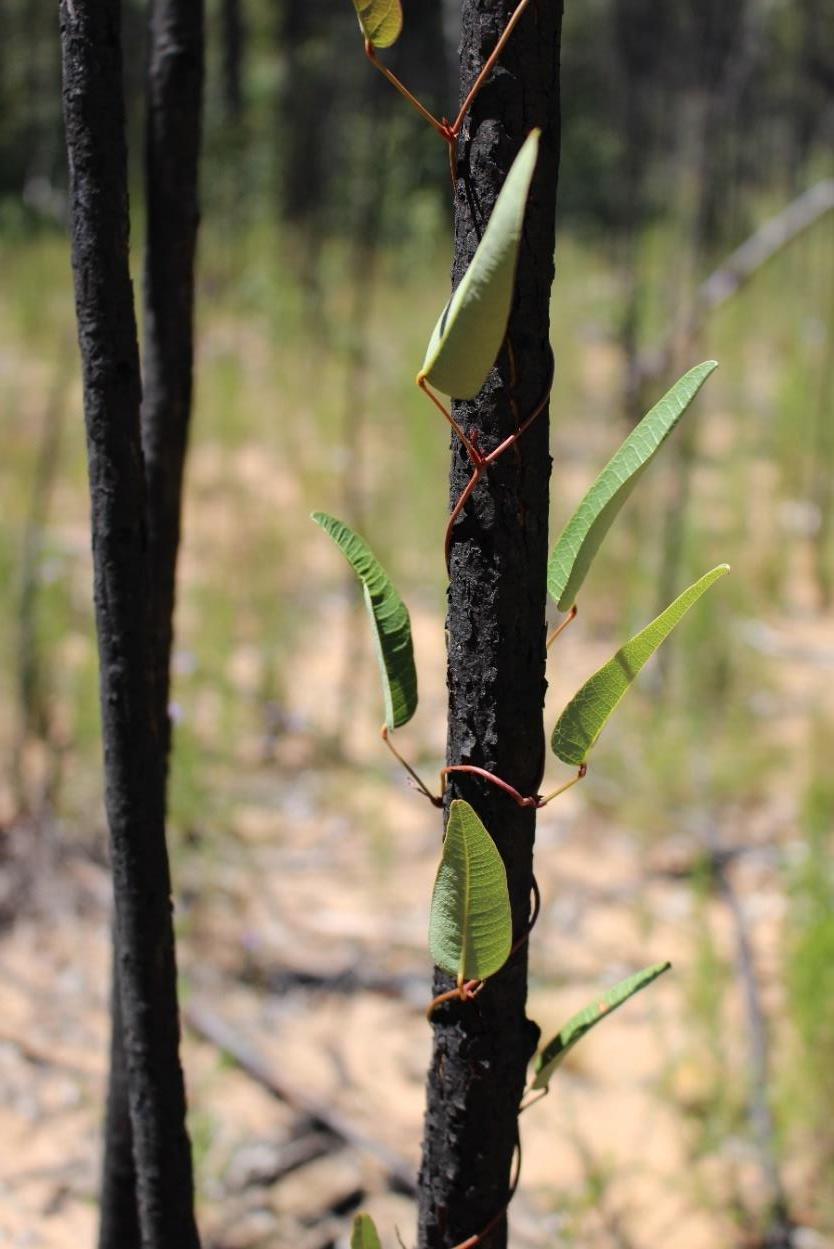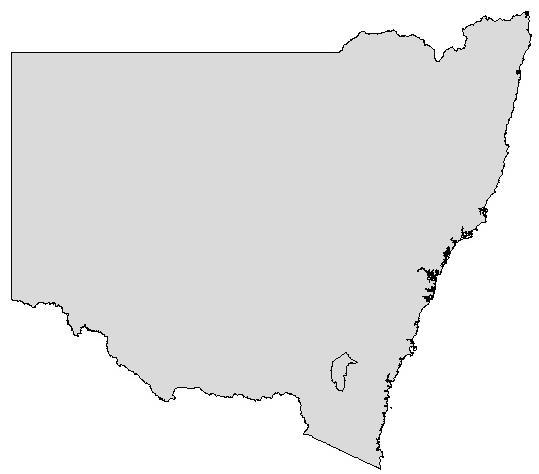
10 minute read
Our Stories
MargaretGraham Berrigan, NSW.
We, Garry and I, are from a very small community, in the Southern Riverina approximately 25 minutes from the Victorian Border and the Murray River. We have a small property which we purchased in 1991 and therefore sought to find a way to use our property as a benefit to the area, the community and a place to feel that we were attached to our heritage of being raised on a farm and enjoying the lifestyle which it provides. Having both been raised in the area on farms we felt that this was a lifestyle we wanted to raise our children in and enjoy a different peace that the land gives.
Our decision was clear, but with it came much hard work.
We began a seed orchard with the planting ofapprox. 8,000 trees in 2002 in the middle of a drought. The drought to beat all droughts they said.
The seed was supplied, planted and nurtured. It was time consuming watering the trees in the middle of the drought and hoping that all would survive. Ourhopes lead us to the beliefthat strength can be found in some trees and yet not in others. Survival of the fittest it might be called. There was disappointment with losses but much joy at the same time as we saw the growth in many.
We persisted in encouraging the growth of the trees and nurtured them with our weekly watering for a whole year so that the trees might grow and return seed for future planting. As they grew they needed less attention and became self-sustaining and relying on the natural rains to keep them alive.
The trees grew overtime to produce much seed. Seed was sorted cleaned and prepared for Central Murray Catchment Authority to distribute to other farms.
You could say this was a project of love or you could call it madness and many people questioned our motive and why we would pursue such a dream. Crazy and different –well yes just a little different from those around us.
This has been a journey of good and bad, sadness and joy, hope and love. We have since planted 95 % of our land to growth of trees and seeds.
Persistence, patience and a labour of love.
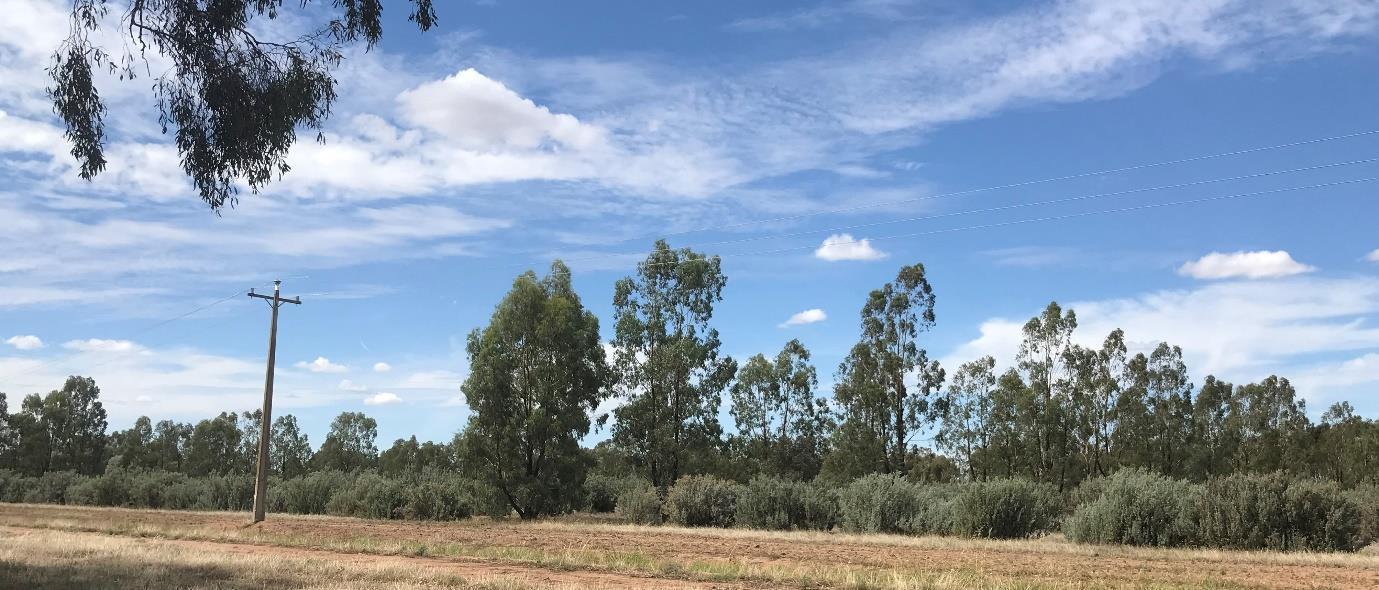
2020 has arrived and we continue to be a part of planting, nurturing, picking and enjoying the fruits ofour labour. The seed is still collected and is used for seed plantations on farms and so we see benefit from the seed we grow being used to enhance tree lines on other farms.
We never know where our seed ends up but it is produced for the purpose ofgrowing more seed and more trees in manyareas.
We now have dozens or more varieties of different trees and shrubs and have restored the native grasses on the land. We have noticed a change in the environment on our farm including an increase in the native plants and grasses and virtually no Paterson’s curse or Bathurst Burr. We have more spiders, lizards and other small creatures and of course larger animals such as rabbits, hares and kangaroos in and around the trees who visit
our space to be fed and find a peace that they enjoy. We wake to the delight of birds singing including the little blue wrens, to the larger parrots, kookaburras and owls.
It is our home and we feel at peace in this space we call home. It gives us great joy to have decided on this project and to plant seeds for the future. It may never give us a huge income but it will continue to touch our hearts.
We all plant seeds in our lives, sometimes not knowing what will become of the planting, and when there will be a harvest. We raised our children planting seeds, we participate in our community sharing seeds. We attend churches in the region planting a variety of seeds.
If a seed is not planted it never has the chance to grow.
We as people within our own family and our church and community continue to do what we feel is right to nurture and grow a place oflove joy and peace. We share what we have been blessed with, so that many seeds may be planted and our crop will be plentiful.
God’s love helps guides us through many challenges so that we may continue to plant seeds. Our world challenges us and this year is no exception with drought, fire, flood and more. Just as we planted seeds and nurtured them we are to have faith and trust that we can be involved in supporting others who need us as they grow in faith.
We, as a people of faith on our journey of life are compelled to plant seeds of love with all whom we meet in our lifetime and there are many ways that we can do this.
It is my belief that we plant seeds every time we meet or greet others, as we share our love to them, embrace them, encourage and support them in their daily lives.
We are placed in particular situations and places for good reason and if we trust that we are being led to help others then we have opportunity to plant many seeds and the greatest seed we can plant is the seed of LOVE.
The Saltbush Nursery…
Vivienne Halbisch Narromine, NSW.
It was 24 years ago when I turned 50 I became a Grandmother for the first time and got an off farm job as a Saltbush Nursery Assistant. This was very challenging as I had never organised so many people before.
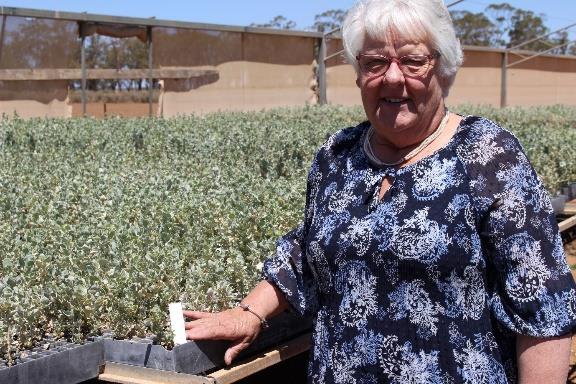
The nursery is the most advanced of its type in Australia and one of the most sophisticated in the world.
The first stage of the Nursery covers a total area of 25,000 Squares meters and can cater for up to 4.8 million seedlings at any point of time.
It provides a sheltered, controlled environment for the plant during their most vulnerable early stage of growth, specialised open hardening areas are provided for the plants prior to shipping and field transplanting.
All the plants are assessed at various points during their initial growth stage for robustness. This allows the selection of the strongest Oldman Saltbush seedlings for field planting providing the highest possible survival and establishment rates even in harsh conditions.
Oldman Saltbush (Atriplex Nummularia) seedlings in the nursery commences in October and goes right through until February of each year.
After germination the seedlings are placed into a controlled, sheltered environment for 10 to 12 weeks. Then are strong enough to be placed on outside benches where they are hardened over a further 14 to 16 weeks. Regular watering, fertilizing, pruning and weeding operations are carried out during this period.
Prior to dispatching, the plants are pre fertilized, leaves air dried so as to remain at their absolute peak during transit to the field for planting.
The individual seedlings are taken from their growing trays and packed into specially developed waxed cardboard boxes which hold 600 fully primed seedlings ready for planting in the field. Depending on the number of seedlings ordered there is a mechanical transplanter available for big areas of seedlings to be
planted. As they are planted they receive a little injection of water and then wait and see them grow.
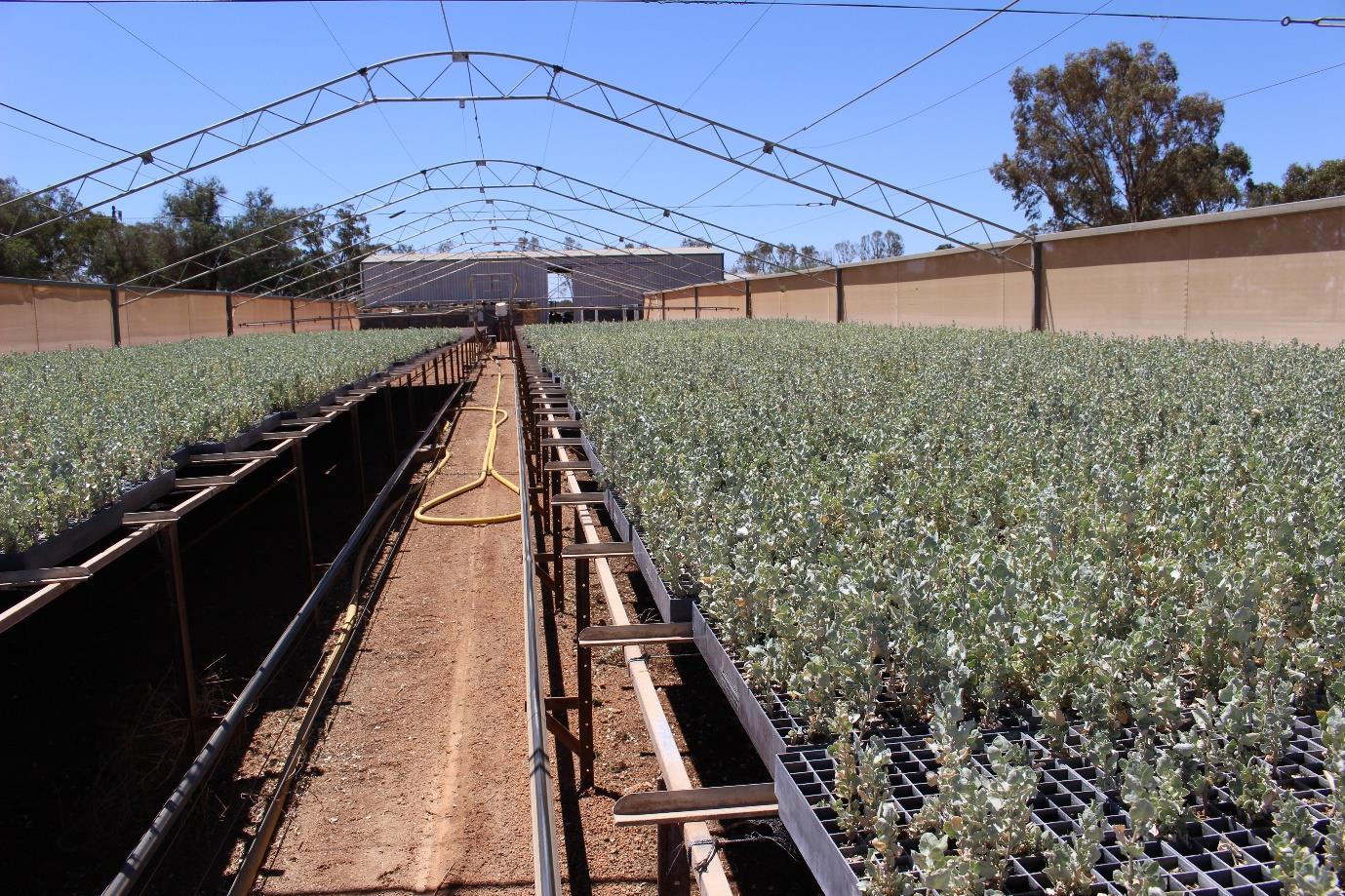
Oldman Saltbush has long been recognised as a palatable drought fodder, particularly for sheep. It develops a lattice of woody stems which branch from or close to ground level and utilises a taproot with a subsequence root system that is moderate to deep.
Carbon Action Project
John Goss Adjunct Associate Professor, Health Research Institute, University of Canberra & Chair of St. Margaret’s Uniting Church Council.
On 1 st . March, the congregations of St Margaret’s Uniting and Holy Cross Anglican in Hackett, Canberra, launched their Carbon Action Project. The main objectives of this project are to:
1. Make the Holy Cross/St Margaret’s site carbon neutral; and to 2. Assist families within St Margaret’s and Holy Cross to become carbon neutral.
Why are we doing this?
Many members of the congregation of St Margaret’s and the Parish of Holy Cross are concerned about climate change. And we should be. According to the latest research (Mark Howden, Climate Change Institute, ANU), even if countries achieve the emission reductions promised in the “Paris Agreement” the average global temperature rise is predicted to reach nearly 3°C. (He compares that to a total of 5°C that historically made the difference between an ice age and what we think of as “normal” conditions.) For Australia this means more days above 40°C, more drought, more heat stress, more fires and importantly, less water for everyone.
This is truly a climate emergency. And as in many an emergency before, all over the nation and the world, church communities
like ours will respond by helping out those in need: the people that are affected by drought, those losing their homes to fires, to flood and rising sea levels. But let’s not wait until more disasters happen. We need to take up our role as stewards of God’s creation.
The motivation for our action in this area is because we believe in God, the source of all that is good, true and beautiful, who made our world and continually sustains and renews it. We believe that our love for God should be shown by loving and respectful relationships with all of God’s creation and with each other.
We grieve that our world has been damaged because humanity has related out of selfishness. In acting to restore our beautiful world, we follow in the footsteps of our Lord Jesus Christ who has “reconciled all things in heaven and earth to God” (Colossians 1.20), and calls us to the transformation of our minds and hearts so that we may be effective signs of God’s love in, and for the world.
As Christian churches in North Canberra, both St Margaret’s Uniting Church and Holy Cross Anglican Church share a common calling to embody and enact God’s Kingdom of justice and peace (including justice for creation) at the heart of our local community.
Our churches’ joint Carbon Action Project is a visible and practical expression of our Gospel commitment in these areas.
Our vision for a carbon neutral future!
In his book ‘Super-power; Australia’s low-carbon opportunity’, Professor Ross Garnaut sets out a path forward for Australia which not only enables us to do our fair share with regard to moving toward a carbon neutral future, but is a path which uses our extraordinary renewable energy resources to build a stronger, more sustainable economy integrated with a stronger ecology. And his response to those who despair as to whether there is hope for change in this area, is to say: “…move forward we will …. as the saving grace of community concern demonstrates its tenacity and influence in our own and many other political systems.” (p. 57)
It is because community concern is crucial to effective action on climate change, that for the Holy Cross/St Margaret’s Carbon Action Project, community is at the centre. In the Carbon Action Project, we are working together as two church communities, by pooling our time, resources and knowledge to move to carbon neutrality as soon as we can and in the most effective way possible.
Everyone in our two communities has a contribution to make to this work. Some have rich monetary resources, and those with high incomes will be expected to make a disproportionate contribution from their income to climate change action. Some have wisdom and knowledge which we would like shared among the community, so that our response can be effective and efficient.
Many of the older people in our community have a lifetime of experience in using limited resources in the most effective way
possible. We need to draw on this wisdom. Some have time to devote to researching the best way to act, and in helping others to take action. Each of us has a role to play.
What are the goals for the Carbon Action Project?
Three possible goals for the Project are:
*To see our church site at Hackett carbon neutral within 2 years.
*To see almost all families having carbon action plans towards neutrality within 2 years.
*To have fun on the road to achieving these goals. We want to cast off gloom and despair, and create an oasis of hope, in which we as a community can celebrate that together we are doing at least our fair share with regard to bringing justice to our beautiful creation.
For further information about this project you can download the Carbon Action project Newsletter at:
https://stmargaretsunitingchurch.wordpress.com/carbon-action-project/
If you want to be placed on the mailing list for further information about this project please email John Goss at:
john.goss@canberra.edu.au


